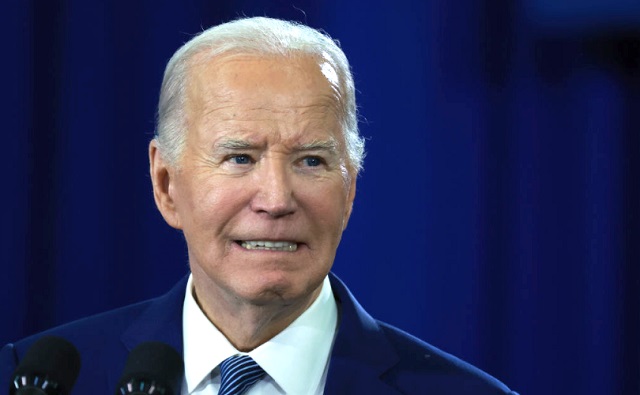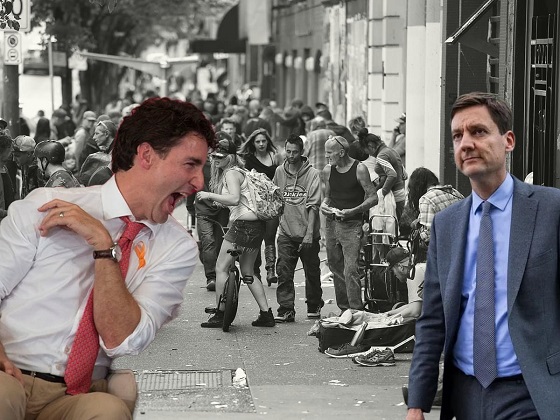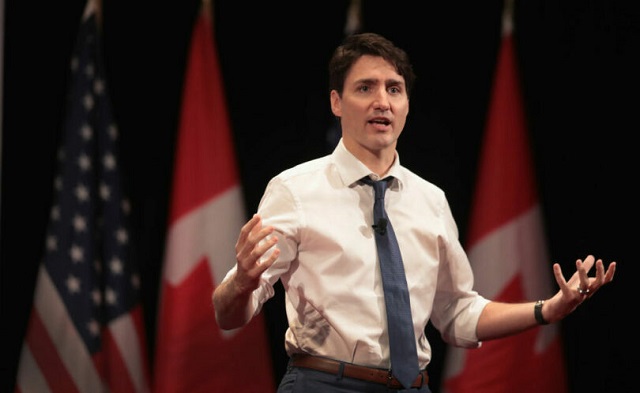National Entertainment
Chanel: Iconic couturier Karl Lagerfeld has died

PARIS — Karl Lagerfeld, Chanel’s iconic couturier whose designs had an unprecedented impact on the entire fashion industry, died Tuesday in Paris, prompting an outpouring of love and admiration for the man in the trademark white ponytail, high starched collar and dark enigmatic glasses who dominated high fashion for the past 50 years.
Although he spent virtually his entire career at luxury labels catering to the very wealthy — including 20 years at Chloe — Lagerfeld’s designs quickly trickled down to low-end retailers, giving him global influence.
Such was the enigma surrounding the German-born designer that even his age was a point of mystery for decades, with reports he had two birth certificates, one dated 1933 and the other 1938.
In 2013, Lagerfeld told the French magazine “Paris Match” he was born in 1935, but in 2019 his assistant still didn’t know the truth — telling The Associated Press he liked “to scramble the tracks on his year of birth — that’s part of the character.”
Chanel confirmed that Lagerfeld, who had looked increasingly frail in recent seasons, died early Tuesday in Paris. Last month, he did not come out to take a bow at the house’s couture show in Paris — a rare absence that the company attributed to him being “tired.”
“An extraordinary creative individual, Lagerfeld reinvented the brand’s codes created by Gabrielle Chanel: the Chanel jacket and suit, the little black dress, the precious tweeds, the two-tone shoes, the quilted handbags, the pearls and costume jewelry,” Chanel said.
The brand’s CEO Alain Wertheimer praised Lagerfeld for an “exceptional intuition” that was ahead of his time and contributed to Chanel’s global success.
“Today, not only have I lost a friend, but we have all lost an extraordinary creative mind to whom I gave carte blanche in the early 1980s to reinvent the brand,” he said.
Tributes from fellow designers, Hollywood celebrities, models and politicians quickly poured in. Donatella Versace thanked Lagerfeld for the way he inspired her and her late brother Gianni Versace. Former supermodel Claudia Schiffer, who credits Lagerfeld as her mentor, called him her “magic dust.”
“What (Andy) Warhol was to art, he was to fashion; he is irreplaceable,” she said.
Chanel said Virginie Viard, his longtime head of studio, will create the house’s upcoming collections. Chanel did not say whether her appointment was permanent.
Lagerfeld was one of the most hardworking figures in the fashion world, holding down the top design jobs at LVMH-owned luxury label Fendi from 1977, and Paris’ family-owned power-house Chanel in 1983. He lost around 90 pounds in his late 60s to fit into the latest slimline fashions.
At Chanel, he served up youthful designs that were always of the moment and sent out almost infinite variations on the house’s classic skirt suit, ratcheting up the hemlines or smothering it in golden chains, stings of pearls or pricey accessories. They were always delivered with wit.
“Each season, they tell me (the Chanel designs) look younger. One day we’ll all turn up like babies,” he once told The Associated Press.
His outspoken and often stinging remarks on topics as diverse as French politics and celebrity waistlines won him the nickname “Kaiser Karl” in the fashion media. Among the most acid comments included calling former French President Francois Hollande an “imbecile” who would be “disastrous” for France in Marie-Claire, and telling The Sun British tabloid that he didn’t like the face of Pippa Middleton, the Duchess of Cambridge’s sister.
“She should only show her back,” he advised.
Lagerfeld was also heavily criticized for sending out a negative message to women when he told France’s Metro newspaper that British singer Adele was “a little too fat.”
Despite this, he did have an under-reported soft side. He was known to be very kind to his staff at Chanel and was famous for giving journalists long interviews after each fashion show. He also shared his unmarried life in his Parisian mansion with a Siamese cat called Choupette.
“She is spoilt, much more than a child could be,” he told the AP in 2013, revealing that he took her to the vet nearly every 10 days.
Lagerfeld had little use for nostalgia and kept his gaze firmly on the future. Well into his 70s, he was quick to embrace new technology: He famously had a collection of hundreds of iPods.
A photographer who shot ad campaigns for Chanel and his own eponymous label, Lagerfeld also collected art books and had a massive library and a bookstore as well as his own publishing house. He was also an impressive linguist, switching between perfect French, English, Italian and his native German during interviews at fashion shows.
Although he spent much of his life in the public eye, Lagerfeld remained a largely elusive figure. Even as he courted the spotlight, he made an apparently deliberate effort to hide what was going on behind his trademark dark shades.
“I am like a caricature of myself, and I like that,” British Vogue quoted Lagerfeld as saying. “It is like a mask. And for me the Carnival of Venice lasts all year long.”
After cutting his teeth at Paris-based label Chloe, Lagerfeld consolidated his reputation in the 1980s when he revived the flagging fortunes of the storied Paris haute couture label Chanel. There, he helped launch the careers of supermodels including Claudia Schiffer, Ines de la Fressange and Stella Tennant.
In a move that helped make him a household name, Lagerfeld designed a capsule collection for Swedish fast-fashion company H&M in 2004 and released a CD of his
A weight-loss book he published in 2005 — “The Karl Lagerfeld Diet” — consolidated his status as a pop culture icon. In the book, Lagerfeld said it was his desire to fit into the slim-cut suits by then-Dior Homme designer Hedi Slimane that had motivated his dramatic transformation.
The son of an industrialist who made a fortune in condensed milk and his violinist wife, Lagerfeld was born into an affluent family in Hamburg, Germany.
Lagerfeld had artistic ambitions early on. In interviews, he variously said he wanted to become a cartoonist, a portraitist, an illustrator or a musician.
“My mother tried to instruct me on the piano. One day, she slammed the piano cover closed on my fingers and said, ‘draw, it makes less noise,” he was quoted as saying in the book “The World According to Karl.”
At 14, Lagerfeld came to Paris with his parents and went to school in the City of Light. His fashion career got off to a precocious start when, in 1954, a coat he designed won a contest by the International Wool Secretariat. His rival, Yves Saint Laurent, won that year’s contest in the dress category.
Lagerfeld apprenticed at Balmain and in 1959 was hired at another Paris-based house, Patou, where he spent four years as artistic director. After a series of jobs with labels including Rome-based Fendi, Lagerfeld took over the reins at Chloe, known for its romantic Parisian style.
Lagerfeld also started his own label, Karl Lagerfeld, which though less commercially successful than his other ventures, was widely seen as a sort of sketchpad where the designer worked through his audacious ideas.
In 1983, he took over at Chanel, which had been dormant since the death of its founder, Coco Chanel, more than a decade earlier.
“When I took on Chanel, it was a sleeping beauty — not even a beautiful one,” he said in the 2007 documentary “Lagerfeld Confidential.” ”She snored.”
For his debut collection for the house, Lagerfeld injected a dose of raciness, sending out a translucent navy chiffon number that prompted scandalized headlines.
He never ceased to shake up the storied house, sending out a logo-emblazoned bikini so small the top looked like pasties on a string and another collection that dispensed entirely with bottoms, with the models wearing little jackets over opaque tights instead.
Lagerfeld was open about his homosexuality — he once said he announced it to his parents at 13 — but kept his private life under wraps. Following his widely known relationship with a French aristocrat who died of AIDS in 1989, Lagerfeld insisted he prized his solitude above all.
“I hate when people say I’m ‘solitaire’ (or solitary.) Yes, I’m solitaire in the sense of a stone from Cartier, a big solitaire,” Lagerfeld told The New York Times. “I have to be alone to do what I do. I like to be alone. I’m happy to be with people, but I’m sorry to say I like to be alone, because there’s so much to do, to read, to think.”
As much as he loved the spotlight, Lagerfeld was careful to obscure his real self.
“It’s not that I lie, it’s that I don’t owe the truth to anyone,” he told French Vogue in an interview.
___
Former AP fashion writer Jenny Barchfield provided biographical material for this story.
___
Thomas Adamson is at www.twitter.com/ThomasAdamson_K
Thomas Adamson, The Associated Press
Alberta
Province adds $335 million over three years to attract more investment from Hollywood

Action! for Alberta’s film and television industry
Alberta’s screen-based sector has momentum, and Alberta’s government is helping to make the province a magnet for the job-creating film and television industry.
In 2020, Alberta’s government launched the Film and Television Tax Credit, causing the province’s film and television industry to grow in size and reputation. Since then, Alberta has attracted 129 productions with a total production value of $1.7 billion. This growth has resulted in approximately 9,000 direct and indirect jobs for Albertans.
To keep this momentum going, Alberta’s government continues to make changes to the program and increase investment in it. One year after the tax credit was launched, the cap was raised, resulting in a doubling of the province’s film and television sector. Now, Alberta’s government is increasing its investment to a total of $335 million over three years to continue attracting the attention and investment dollars of Hollywood.
“Alberta is experiencing exponential growth in our film and television sector, and we are well on our way to becoming a top Canadian jurisdiction for producers from around the world. Since the introduction of the Film and Television Tax Credit, the film and television sector in Alberta has doubled. Productions reach every part of Alberta – big cities, small towns and rural locations – and use local resources, businesses, accommodations and contractors, supporting thousands of jobs.”
As the province’s film and television industry grows, so does the quality and number of Alberta-made productions. To help grow and promote local talent and productions, Alberta’s government is also doubling the funding to the Alberta Made Screen Industries Program. This funding will support local producers and attract productions from around the world to set up shop in Alberta.
“Alberta-made film and television productions showcase Alberta’s unique culture, breathtaking landscapes and stories to audiences across the globe. We are increasing our support to smaller productions because they provide a unique Alberta-made training ground for emerging talent and create local, highly skilled workers in the sector.”
The Film and Television Tax Credit and Alberta Made Screen Industries Program work together to showcase the beauty and diversity of Alberta, create jobs, diversify the economy and support hospitality, service and tourism in the province. These targeted incentives to the film and television industries are helping to ensure Alberta remains the economic engine of Canada for years to come and the next film and television hub.
“The tax credit is central to the success of the industry. This is a competitive industry globally, and here in Alberta we’re fortunate we had the cap removed. Now we can see productions with budgets from $100,000 to well over $100 million. Now that we have a robust production environment, there are more opportunities for people to have well-paying creative jobs.”
“The Alberta government has provided supports for the film and television industry that provide certainty. It gives us more flexibility in how we’re moving forward in our film and television work and the way that we’re running our businesses.”
“Seeing the increase to the Alberta Made Production Grant in the last budget has been fantastic. It will help grow the local industry, which means so much to local performers because that’s where they build their resumés. It allows them to be a working performer, and not take side jobs or a day job somewhere else, and really focus on their craft.”
Quick facts
- According to Statistics Canada data:
- Every $1 million of production activity in the screen-based production sector creates about 13 Alberta jobs.
- Every $1 million of government investment under the Film and Television Tax Credit program is expected to support about 85 Alberta jobs.
- The film and television industry is experiencing significant growth nationally and globally.
- Every year, Alberta graduates more than 3,000 creative industry professionals from its post-secondary institutions.
- The production workforce has grown 71 per cent from 2017, or by about 4,000 workers across all positions.
- Alberta’s Film and Television Tax Credit supports medium- and large-scale productions with costs over $499,999 through a refundable tax credit on eligible Alberta production and labour costs to corporations that produce films, television series and other eligible screen-based productions.
- The Alberta Made Production Grant supports productions with a budget of up to $499,999.
- The Alberta Made Screen Industries Program, through the Alberta Made Production Grant, supports smaller productions that do not qualify for the tax credit, covering 25 per cent of eligible Alberta production costs to a maximum of $125,000.
- Every $1 investment in the Alberta Made Production Grant program generates an additional $4 in economic return.
Alberta
Edmonton to host “Road to the JUNOS Concert Series” leading up to Juno Awards week

From Explore Edmonton
Road to The JUNOS Concert Series Builds Excitement to JUNO Week.
Access and Diversity Key for Fans and Artists.
The JUNOS 2023 Host Committee is excited to announce an Edmonton-based concert series, titled Road to The JUNOS, as a lead-up to The 52nd Annual JUNO Awards Broadcast and JUNO Week from March 9-13.
The concert series will be set in small, intimate venues around Edmonton and feature local and regional artists who one day may end up on the JUNOS stage. Road to The JUNOS is a collaboration between the JUNOS 2023 Edmonton Host Committee, CBC Music and Explore Edmonton. It aims to provide excitement and create momentum leading into Canada’s biggest celebration of music.
The 10-show concert series will run from Monday, February 6 through Tuesday, February 28 at local venues in Edmonton. Of note, the artists playing these events come from a wide variety of backgrounds and genres and offer an opportunity to see some of Canada’s newest and most exciting talent. Fans can be a part of an intimate JUNOS concert with an affordable advance ticket price of only $10.

Road to The JUNOS is possible thanks in part to federal funding through PrairiesCan’s Tourism Relief Fund. This Fund is positioning Canada as a destination of choice for domestic and international travel. PrairiesCan administers the Fund in Alberta.
“Edmonton is a vibrant and dynamic cultural hub and our government’s support for Road to The JUNOS will bring that experience to visitors from across Canada and around the globe. Through the Tourism Relief Fund and our partnership with organizations such as Explore Edmonton, communities across Canada will capitalize on the jobs and economic activity generated through Edmonton’s growing tourism industry.”
– The Honourable Dan Vandal, Minister for PrairiesCan
“Road to The JUNOS is an important step in positioning Edmonton as an all-season destination and celebrating our community’s business and arts districts. I’m proud to see our government supporting Edmonton to build on its leadership in arts and culture while strengthening local tourism activity that benefits businesses in our city.”
– The Honourable Randy Boissonnault, Minister of Tourism and Associate Minister of Finance
“Road to The JUNOS is an exciting opportunity to grow Alberta’s music industry, showcasing local talent to visitors from all parts of Canada. The Alberta government is proud to support this series of concerts that features Alberta’s talent on stage as well as the venues, promoters and other music professionals.”
– The Honourable Jason Luan, Alberta Minister of Culture
“Canada has a long history of producing exceptionally talented musicians. The Road to The JUNOS concert series hopes to help give a platform to some of our up-and-coming artists and audiences a chance to say ‘we saw them when’.”
– Aimée Hill, co-chair, 2023 Host Committee
“Explore Edmonton is proud to support The JUNO Awards in March and we are delighted to be a part of this grassroots concert series. Promoting our local music venues, supporting talented Canadian musicians, and giving Edmontonians quality music experiences at an affordable price is such an important piece to the whole JUNOS experience. And we get to show off a little for the rest of Canada!”
– Traci Bednard, CEO of Explore Edmonton
The JUNOS Experience starts here. For more information and to buy tickets, visit: https://edmonton.junoawards.
-

 conflict2 days ago
conflict2 days agoCol. Douglas Macgregor torches Trump over support for bill funding wars in Ukraine and Israel
-

 Censorship Industrial Complex2 days ago
Censorship Industrial Complex2 days agoNow We Are Supposed to Cheer Government Surveillance?
-

 Alberta2 days ago
Alberta2 days agoRed Deer Doctor critical of Alberta’s COVID response to submit report to Danielle Smith this May
-

 Alberta24 hours ago
Alberta24 hours agoActivity-Based Hospital Funding in Alberta: Insights from Quebec and Australia
-

 Business22 hours ago
Business22 hours agoUN plastics plans are unscientific and unrealistic
-

 International2 days ago
International2 days agoBiden admin expands Title IX to include ‘gender identity,’ sparking conservative backlash
-

 Business21 hours ago
Business21 hours agoTaxpayers criticize Trudeau and Ford for Honda deal
-

 Alberta2 days ago
Alberta2 days agoAlberta’s baby name superstar steals the show again






